How to Make Sushi Rice in a Rice Cooker
This is hands down the easiest way to make sushi rice for homemade sushi. Just use your rice cooker to cook the rice, mix in the vinegar at the end, and it’s ready to go!
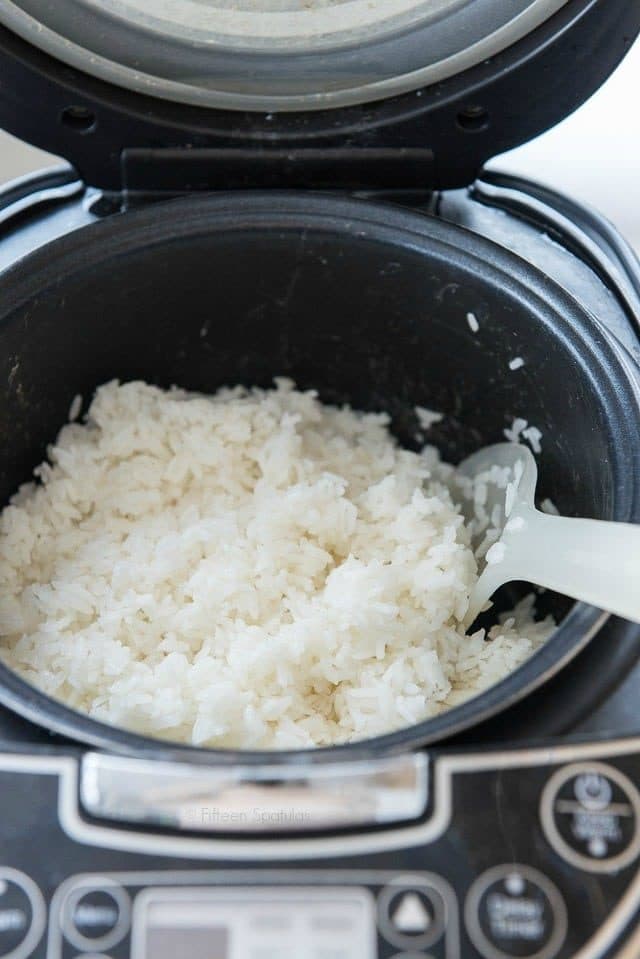
There is an art to making perfect sushi rice, but I think that’s best left to the sushi chefs who have spent years learning how to make it perfectly.
When I make sushi at home, I leave the cooking up to my rice cooker. And as long as you have a somewhat decent machine, the results should definitely be more than satisfactory for delicious sushi rice!
Yesterday I posted my how-to for making homemade sushi, and this post is completely dedicated to making the sushi rice.
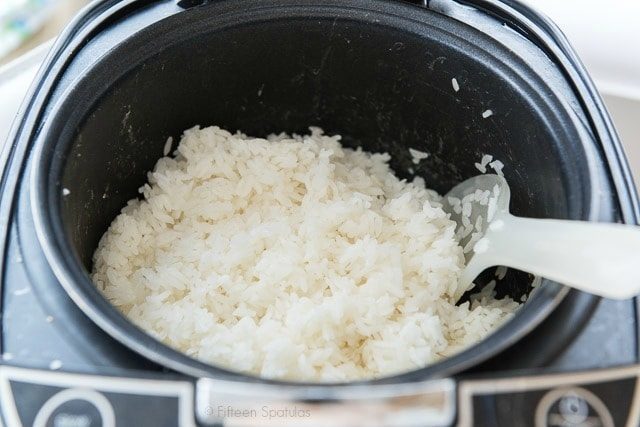
I have this Aroma cooker, and at $60 I think it’s a very reasonably priced appliance. I use it a ton and I’m impressed with the end results it turns out. Fluffy, moist, and slightly sticky grains, but not water logged.
UPDATE: After lots of research, I was convinced enough that more expensive rice cookers are in fact superior, so I ended up replacing my old cooker with this 5-star rated Zojirushi (affiliate). And WOW there is a huge difference. We had kept the box in case we wanted to return it, but the end results are so much better, we decided it’s indeed worth the cost. But, know that you can use virtually any cooker to get decent results.
Tips for Best Results
Don’t rinse the rice – This is an instance where you do not want to rinse away the starch from the outside of the grains, as the starch helps keep the grains sticky, which is ideal for making sushi.
Use filtered water – If your tap water is hard or has an unpleasant taste, take the extra step to filter it first. This is subtle, but the taste will be better.
Use a seasoned vinegar – For the proper flavor, you need to season the cooked rice with salt and sugar in addition to the vinegar. I prefer to buy seasoned vinegar that already has salt and sugar in it, so the granules are completely dissolved.
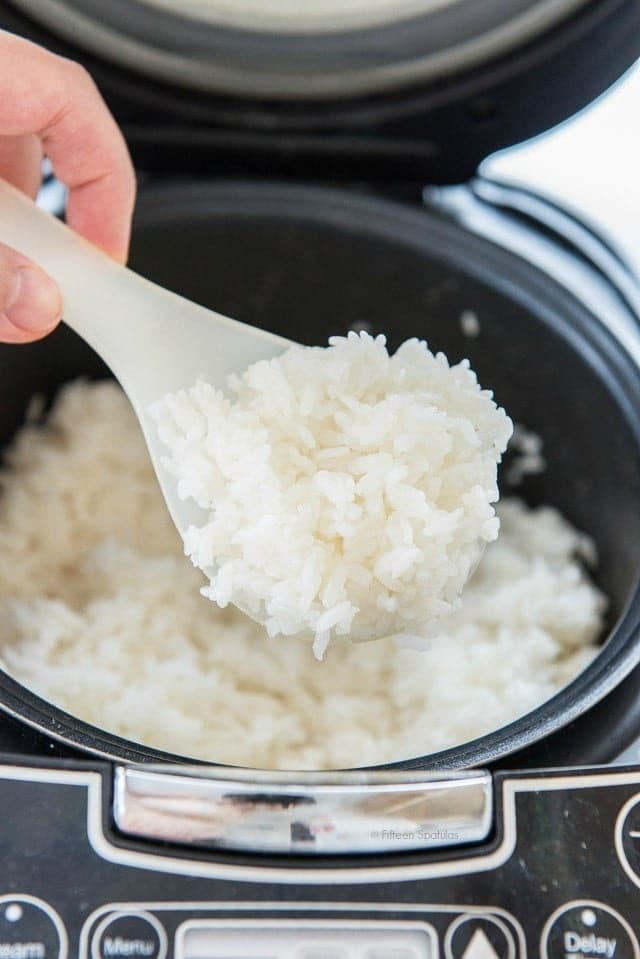
To get started, combine rice and cold water in the pot of the machine.
Make sure you follow the exact instructions for your rice cooker and/or the rice instructions for the water. You really don’t want to add too much water here, because we’re also adding vinegar later.
The Best Sushi Rice
The type of rice you use matters. I prefer Nishiki, which is easy to find and regarded as high-quality, good sushi rice. My Japanese friends say it’s the best!
Tamanishiki and Yuki Tsubaki are also highly regarded. Japanese rice tends to have more amylose, and this higher starch content will give you the sticky rice you want.
If you cannot find these brands, just make sure that whatever you buy states that it’s recommended for sushi, so you get short-grain rice, almost rounded, highly starchy and sticky grains. Do not use long-grain rice or medium-grain rice.
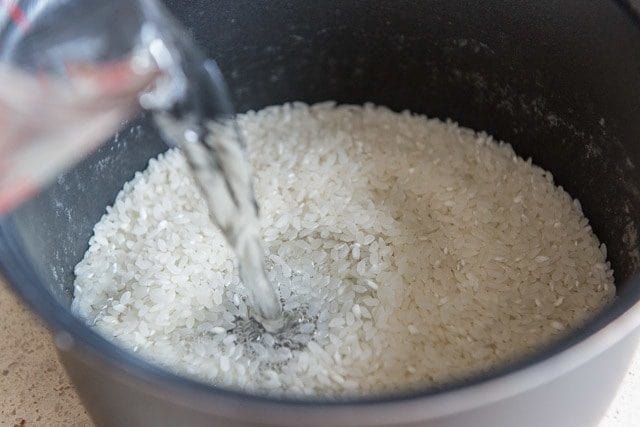
As far as washing goes, I don’t rinse this particular brand of rice, or do a rice soak of any kind.
A lot of people are adamant about this, but the directions for Nishiki instruct you to combine the grains with the water as is. You can wash the grains if you feel more comfortable.
While the rice cooks on the white rice setting, all you need to finish it up is some seasoned vinegar.
Most recipes call for vinegar, salt, and sugar, then you dissolve them together in a small saucepan and season the rice with this vinegar mixture.
Buying vinegar with the salt and sugar already in it takes that step away, so that’s why I keep this on hand. I don’t have to worry that the sugar dissolves properly, and the flavor is evenly distributed.
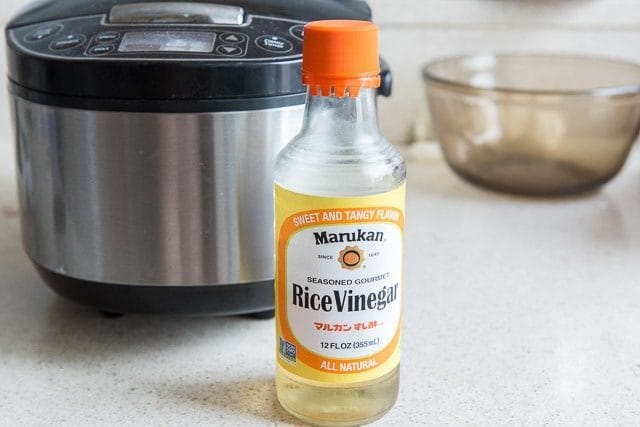
For the 1.5 cups of uncooked rice that we used, about 1/4 cup of the sushi vinegar is ideal.
Add it to the pot:
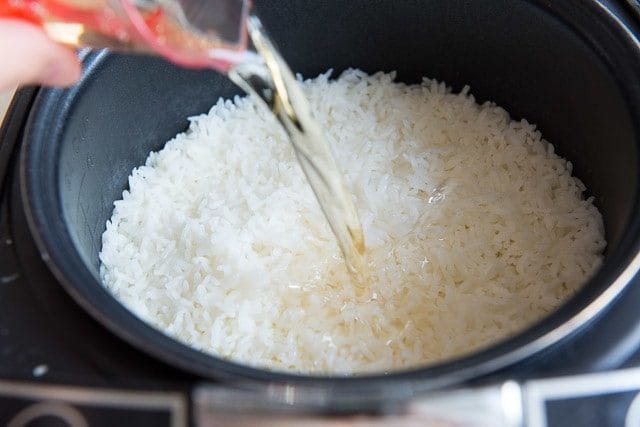
Gently toss the grains around to further distribute the vinegar, taking care not to mash or flatten the rice.
If you mix too much, the grains can break down and become a bit gluey instead of having the proper sticky texture.
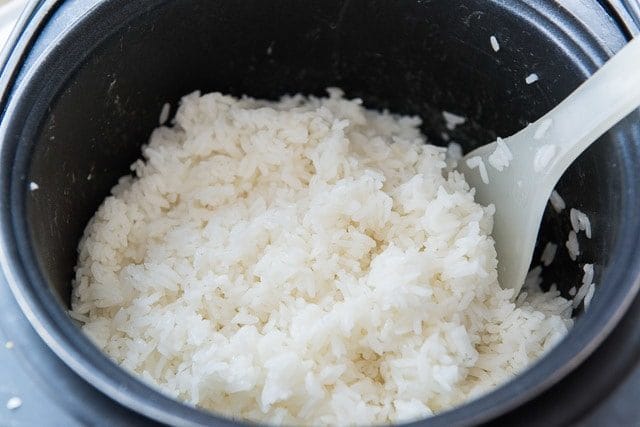
The seasoned rice is ready to be used for homemade sushi, though I recommend letting it cool to room temperature for easy handling. Keep the pot covered with a damp towel so the grains don’t dry out.
This basic rice can be used for your favorite sushi roll (I love California rolls and Philly rolls), or even for rice bowls topped with raw fish and your favorite simple ingredients and veggies. Enjoy!
Recipe Tips and FAQ
Keep in an airtight container in the fridge for up to 3 days.
Yes, in an airtight container for up to 2 months. To thaw, leave in the fridge overnight.
Microwave at 70% power in 30-second intervals until warm and fluffy. Make sure not to overdo it, or the grains will get hard and dry.
Did you enjoy the recipe? Please leave a 5-star rating in the recipe card below and/or a review in the comments section further down the page. Or, follow me on Facebook, Instagram or Pinterest!
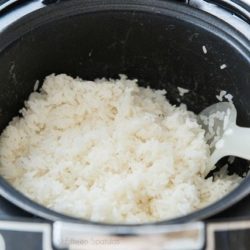
How to Make Sushi Rice in a Rice Cooker
Ingredients
- 1.5 cups sushi rice (I use Nishiki)
- 2 cups filtered water
- 1/4 cup seasoned rice vinegar (I use Marukan)
Instructions
- Place the rice and water into a rice cooker. Cook according to the “white rice” setting on the cooker.
- When the rice has finished cooking, evenly pour the seasoned vinegar all over the cooked grains. Toss everything around to further distribute the vinegar, taking care to be gentle, and not mash the grains, or they will become gluey.
- It is now ready to be used for sushi. Here’s my post on homemade sushi.
Notes
Nutrition
Nutrition is estimated using a food database and is only intended to be used as a guideline for informational purposes.
How to Make Homemade Sushi:
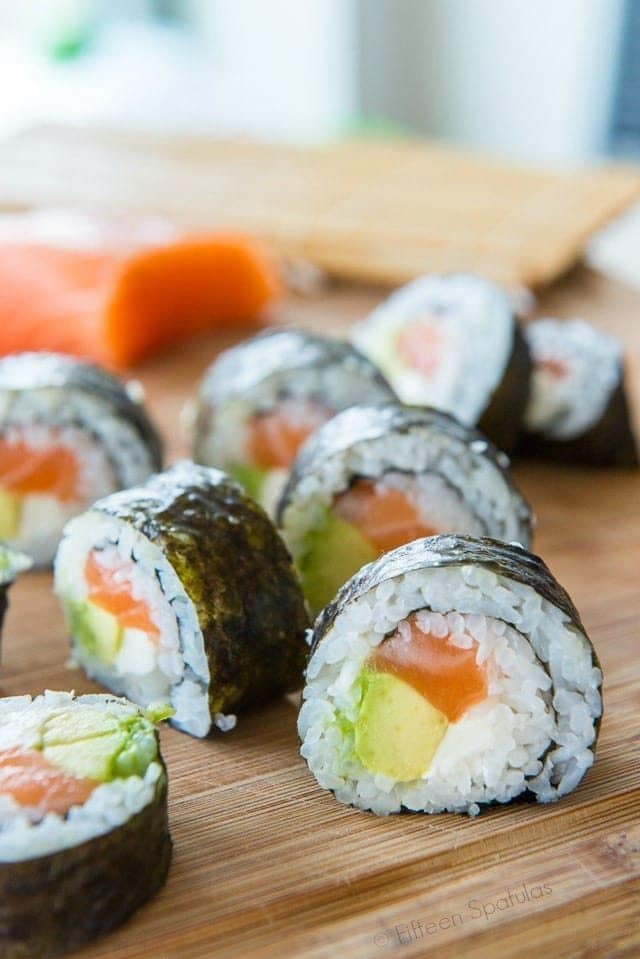

38 Comments on “How to Make Sushi Rice in a Rice Cooker”
This sounds brilliant for a fast attempt so im going to start asap. So glad to find thisceasier recipe too. Didnt get put off at all. Cant wait toctry and so good sounding eating… never tried yet so will be an adventure all round. Yum! Thanks so much
This recipe was easy to follow!
Thank you! This was easy and simple and delicious. 🙂
I will be making this for a sushi rolling party tonight – can’t wait! FYI – the reason that Nishiki rice doesn’t require pre-rinsing/washing is because it’s “musen mai” – if you get rice that says that on the package, it means that it was milled using a new milling technology that doesn’t require rinsing!
Hi Joanne, I found your website for coleslaw recipe. Yours is the best!
Btw, for traditional proper sushi rice should be made with kombu just FYI.
Hey this is a great resource but I’ve got conflicting info where a search for “how much rice vinegar in sushi rice” tells me I should only put half the amount per cup. Sushi rice isn’t supposed to smell (strong) of the vinegar mixture right?
Love your beautiful story thank you for sharing.
Thanku so much so simple so easy steps to follow was a hit with all have directed them to your site i love cooking you have made sushi so easy an enjoyable to make
Thank you
I learned something new, I did not know the vinagar was seasoned already.
Quick and easy !!
Love sushi, want to make my own
What if i do not have a rice cooker, can i do this same recipe in a pot?
Just made the sushi rice and it was was excellent! How long can I keep the sushi rice before it goes bad?
I love your recipe. I will try to do it. Love this kind of rice 💜 thanks for sharing.
what do you mean SIX rolls i have 6 people to cook for and what i’m making is not that filling so i need rice to fill them up.
I know this is a long-ago comment but I think what she meant was for six rolls of sushi? Where you still have to cut it into pieces. So for whatever size of seaweed you have, with rice and whatever fillings, it would make six. Then you would cut it.